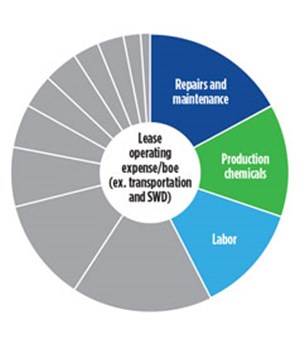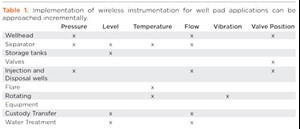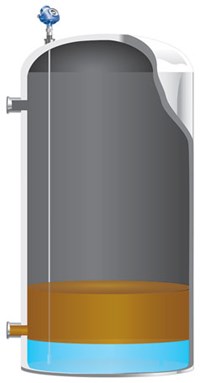Achieving production with efficiency: Keys to profitability
Price takers are companies selling products to markets so big that a single firm—whether it produces everything it can or stops completely—cannot influence the supply picture enough to change the price. Such is the situation for North American operators working in tight oil and shale gas fields. The market determines the price, so the only ways to increase profitability are increasing output or cutting costs.
Fortunately, commodity prices have recovered significantly since the worst of the downturn. This is a major improvement, but the drive for profitability is as strong as ever. Most companies need to regain ground lost during the hard times, so any means to broaden the spread between production cost and market price is important, and this is where automation of production sites can contribute.
There was a popular narrative a few years ago. It said that during the fracing boom, oil producers were drilling wells as fast as they possibly could to get to first oil. Any site that could produce was producing, whether it was finished or not. Some operational inefficiencies could be tolerated in the meantime, and automating those sites would be done down the road. That road, and others, hit a detour and many anticipated improvements were never completed. Has the time come to revisit this situation?
Looking at the state of the industry in these general terms can be interesting, but it doesn’t address the concerns of a single company—your company—and where you are today. How can you increase profitability? What improvements can be made at your site?
THE CHANGING PRODUCTION PRICE PICTURE
Costs related to drilling and completing wells have changed markedly since this type of production took off in earnest. Many efficiency gains were already realized before the downturn to lower costs, and they went down further still during the commodity price decline. As the prices for oil and gas have recovered, some other associated costs also have increased, although the degree of movement has been uneven.
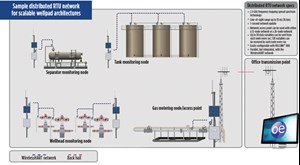
Getting price reductions for outside services and commodity products used for drilling and completion is wonderful, but they are unpredictable and difficult to maintain in the long term. The most important profitability gains are those made internally by re-evaluating legacy operating practices and engineering standards.
One of the main ways to do this is by revisiting some of the automation projects left undone previously. Wireless-enabled instrumentation and remote telemetry units (RTUs) are the most cost-effective and low-risk enablers of this approach.
THE WIRELESS VALUE PROPOSITION
The primary element of the larger wireless value proposition has not changed since day one: It eliminates the cost of wiring. Actual costs vary by project, but the consensus opinion says wiring is very expensive, when all the conduit, trenching, pulling and terminating are counted. Again, numbers vary, but for a typical wellhead installation, the cost difference of wireless versus traditional wired instrumentation can be around $75,000.
That figure applies to new construction, when the cost of wiring is at its lowest. If one looks at retrofitting an under-instrumented operating facility, the cost of adding a new wired instrument on a cost-per-device basis becomes far higher than it would have been initially. This is particularly problematic, since it can reduce the likelihood of a facility implementing improvements. As a case in point, say one element of a site improvement plan is installing guided-wave radar (GWR)-level instruments on product storage tanks, to eliminate the need for manual tape-measure readings via a
thief hatch.
If it is necessary to cut through concrete to pull wires to five or six tanks, the costs will be high enough to make the site owners think twice about implementing the project. On the other hand, if the level instruments can simply be mounted and joined to the wireless network, the installation will be far faster and less expensive. The cost picture to add another instrument for whatever purpose becomes far more attractive when wiring expenses do not appear on the budget. Installation also can be done much more quickly, with little or no downtime, and more safely when compared to adding wired instruments.
REVISITING EXISTING PRODUCTION FACILITIES
Given today’s production picture, there are more existing facilities reconsidering earlier automation choices than greenfield sites, so existing facilities will be our main topic for the remainder of this article. We will look at how wireless instrumentation and networking can reduce costs and improve overall production. For operators trying to decide what specific areas to attack, this should help sort through the possibilities.
Table 1 shows a variety of applications and associated instrumentation. Each situation will be different, but the general guidelines apply. The underlying assumption is that most of the functions described are being performed presently, at least to some extent, but much of it is being done manually.
MORE WAYS THAT WIRELESS SAVES MONEY
As stated earlier, the clearest value of wireless technologies is avoiding the cost of wired infrastructure. The next largest source of saving is the reduction of engineering and programming, which is possible through using the drag-and-drop capabilities, which are possible through a distributed wireless RTU network, Fig. 1. It is much easier and faster to establish new wells on a reliable communication link to the supervisory control and data acquisition (SCADA) backhaul network, as well as other local network nodes.
Beyond initial drilling and completion operations or subsequent infill expansions, the value associated with an existing wireless sensor network extends to asset and production reliability, as well as health, safety, security and environmental (HSSE) risk mitigation. Improvements in any one of these areas have a direct impact on reducing overall lease operating expense (LOE), which reduces production costs per barrel and feeds cash flow for an operator’s drilling program.
Analysis of the primary cost drivers of LOE across tight oil and shale gas operations reveals that wireless technologies can have a demonstrable impact on three of the top five line-item costs, excluding transportation and salt water disposal (SWD). These costs account for approximately 45% of total LOE on a per-boe basis, Fig. 2.
For example, production chemical consumption can be optimized by monitoring levels in the chemical tanks, and then verifying a direct correlation between production and chemical consumption. After implementing this approach, one operator reduced chemical usage by more than 180,000 gal/yr. An existing WirelessHART sensor network makes it simple to install and integrate an additional level sensor, without expensive wiring or a one-off monitoring solution.
Wireless monitoring also can reduce costs associated with production, and support equipment repairs and maintenance through condition monitoring in real time, rather than relying on manual inspection rounds. An operator in North Dakota was able to reduce the number of wellsite call-outs 96%, by adding wireless condition monitoring devices. The operator also avoided repair costs that had been common previously, when wired infrastructure was damaged during well pad maintenance.
Basic product storage and tank management can shift the cost picture significantly. An operator in the Eagle Ford play realized a 6,600-boed production increase over a year, simply by monitoring inventory levels in real time (Fig. 3), reducing shut-in events. Having timely inventory data can optimize transportation service costs by dispatching trucks, only when necessary. Additionally, wireless tank level monitoring reduces one of the largest safety hazards: exposure to vapor during manual gauging and fluid transfer operations.
When an effective selection of wireless instruments is supported by an RTU, much of the previous manual data collection is done automatically and reported far more frequently, or even in real time. This extends visibility into current operations and adds an additional layer of protection from manual errors. Automating tedious and time-consuming monitoring tasks enables a lease operator or pumper to focus on high-value tasks while onsite, and reduces safety risks associated with loss of containment.
Examples of this include thief hatch and emergency push-button monitoring, or monitoring valve position prior to fluid transfer or change in production state. Seamless integration with the RTU and larger networks enables operators back at headquarters to access actionable diagnostic information through secure communications, without complicated integration work. This reduces safety risks while enhancing productivity.
SPECIFIC INSTRUMENT PLACEMENT EXAMPLES
So far, we’ve looked at general areas where wireless instrumentation can provide the means to change operational practices. Now let’s consider more specific places, where adding instruments can make a difference, many of which are listed on Table 1.
Well casing:
- Monitoring pressure in the annular space between the tubing and casing can indicate when a tubing leak is developing.
Separator:
- Monitoring temperatures on heated separators can verify whether the units are hot enough to break up emulsions, but not so hot as to inhibit the crude reaching correct Reid vapor pressure limits for transportation requirements, or to boil off valuable natural gas liquids (NGLs).
- Monitoring level ensures triggering a safety shutdown of the well, in the event of a high- or low-level alarm in the separator. A high-level incident can lead to a spill, while low-level can cause excessive gas venting to tanks.
- Monitoring separator pressure avoids creating excessive back pressure on artificially lifted wells. Excessively low pressure can cause excess NGLs to be lost, reducing crude quality.
- Monitoring PRVs captures release incidents and can help reduce waste created by flaring too much gas.
Tanks:
- Continuous interface and level measurement, using a GWR transmitter can provide insight into tank levels, minimize high-level alarms, validate transfers and prevent sending oil out with the water.
- Adding a high-level switch provides an alarm prior to a spill, preventing product loss and enhancing safety of well pad and tank facilities.
- Monitoring PRVs can detect an open or closed position of the pressure and/or vacuum-side relief valve. Using information from a sensor, combined with a wireless transmitter, enables quick identification and location of developing problems to improve site safety, protects the tank from damage, and reduces emissions that may result in environmental issues and fines.
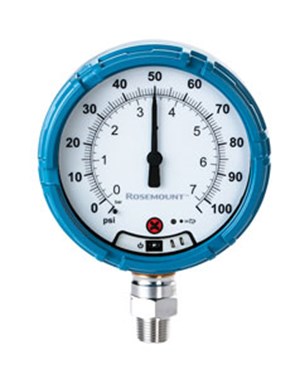
Applications around the well pad:
- Many locations around a well pad are outfitted with mechanical analog pressure gauges. While inexpensive to buy, they cost money every day, since they require human operators to read them and record data by hand. Replacing these with WirelessHART-equipped electronic gauges (Fig. 4) or pressure transmitters can capture data continuously, while still providing a local display for operators when on site.
- Thief hatches need to be shut firmly and locked to maintain tank pressure and avoid vapor loss. Position sensors equipped with a WirelessHART interface can warn when hatches have not been closed properly.
- Rotating equipment, such as pumps and compressors, can be monitored with bearing temperature and vibration sensors. These can report developing problems prior to a failure.
- Strategically placed temperature sensors can verify good performance from the flare. Multiple temperature sensors can report via a single wireless signal.
THE STRATEGIC RTU
The RTU is the heart of a distributed network designed to provide seamless wireless integration of multiple field and individual wireless instruments. Its radio technology provides transparent data connectivity to enable shared, distributed control across a wide geographical area.
Automation platforms, designed specifically for well pad control and optimization, capture and utilize data from wired and wireless instruments and sub-controllers. The interface supports fast setup with WirelessHART transmitters, auto-detecting each and adding them to the network. There is no site survey required, making it easy and fast to set up the wireless field instrumentation, saving time and money. The integrated interfaces have been optimized to work in a low-power environment, minimizing additional power infrastructure investments.
REALIZING THE PAYOFF
The biggest payoff for improving the profitability of a wellsite is increasing production. Unfortunately, some of the improvements necessary to increase production come with high capital costs and risks. The improvements discussed here, on the other hand, involve much lower costs and essentially no risk.
Wireless technologies are proven and cost-effective in well pad applications. They enable operators to reduce their cost basis through efficient facility construction and a scalable architecture, delivering future flexibility for field developments and production optimization.
Production also increases as waste, interruptions and shutdowns are avoided. Operators standardizing on wireless capabilities realize immediate operational efficiencies, and when economics dictate further field development, a wireless infrastructure provides operators with the ability to be more responsive than their competitors.
Operators need to spend far less time at well pads, as more operational data is captured and transmitted automatically. When it is necessary to deal with a problem or malfunction, operators will have an accurate picture of what is happening before they drive to a remote site, enabling them to bring all the tools and parts needed for the job in one trip.
Improving operational performance is the key to sustainability and growth for operators in the tight oil and shale gas business. Instead of spending potentially tens of thousands of dollars per completed well on non-value-added activities and waste associated with traditional wired automation, wireless technologies allow operators to divert their capital to optimization initiatives, to enhance the productivity of the wells. ![]()
- Coiled tubing drilling’s role in the energy transition (March 2024)
- What's new in production (February 2024)
- Digital tool kit enhances real-time decision-making to improve drilling efficiency and performance (February 2024)
- E&P outside the U.S. maintains a disciplined pace (February 2024)
- U.S. operators reduce activity as crude prices plunge (February 2024)
- U.S. producing gas wells increase despite low prices (February 2024)

